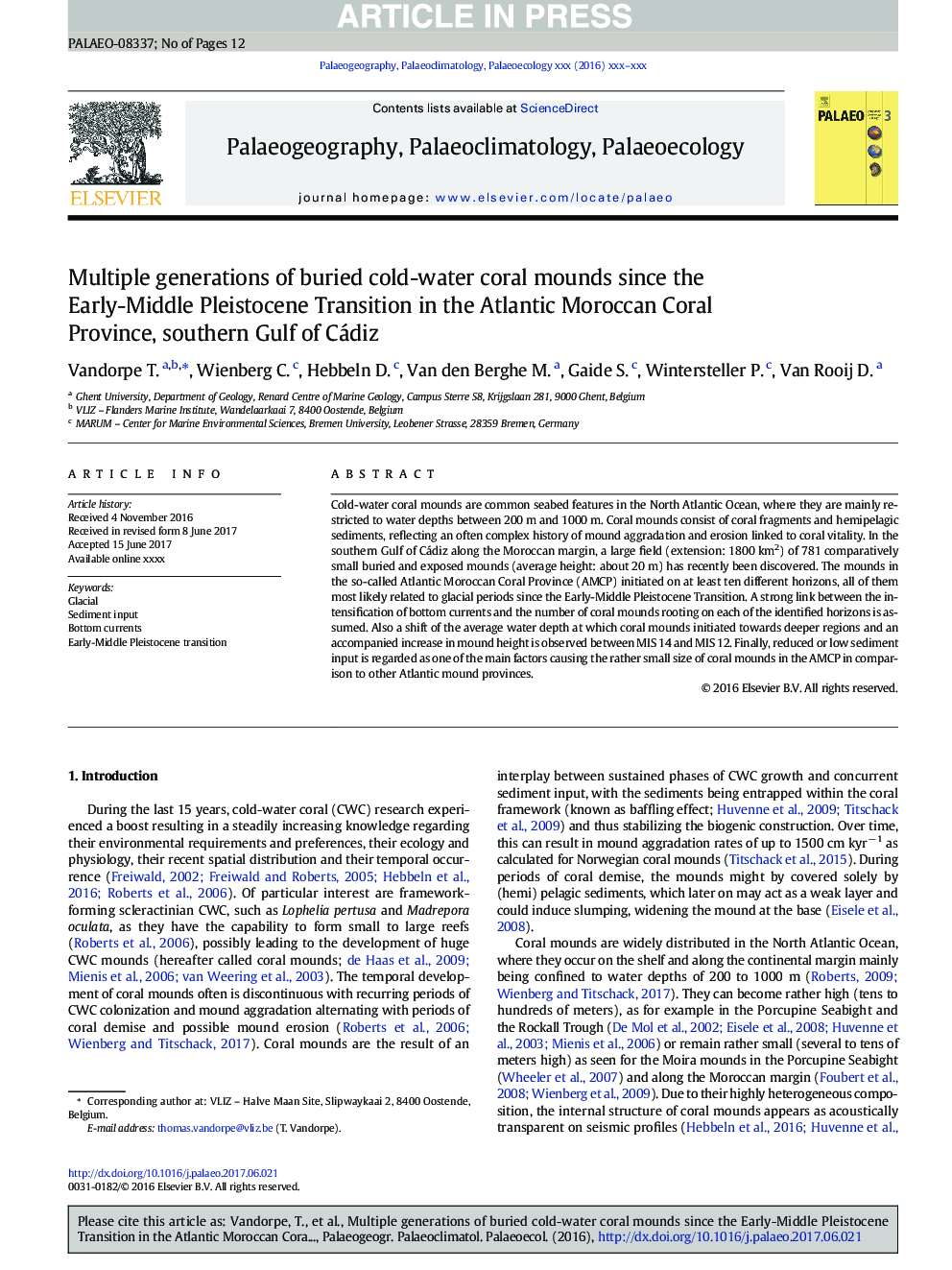| Article ID | Journal | Published Year | Pages | File Type |
|---|---|---|---|---|
| 8868656 | Palaeogeography, Palaeoclimatology, Palaeoecology | 2017 | 12 Pages |
Abstract
Cold-water coral mounds are common seabed features in the North Atlantic Ocean, where they are mainly restricted to water depths between 200Â m and 1000Â m. Coral mounds consist of coral fragments and hemipelagic sediments, reflecting an often complex history of mound aggradation and erosion linked to coral vitality. In the southern Gulf of Cádiz along the Moroccan margin, a large field (extension: 1800Â km2) of 781 comparatively small buried and exposed mounds (average height: about 20Â m) has recently been discovered. The mounds in the so-called Atlantic Moroccan Coral Province (AMCP) initiated on at least ten different horizons, all of them most likely related to glacial periods since the Early-Middle Pleistocene Transition. A strong link between the intensification of bottom currents and the number of coral mounds rooting on each of the identified horizons is assumed. Also a shift of the average water depth at which coral mounds initiated towards deeper regions and an accompanied increase in mound height is observed between MIS 14 and MIS 12. Finally, reduced or low sediment input is regarded as one of the main factors causing the rather small size of coral mounds in the AMCP in comparison to other Atlantic mound provinces.
Keywords
Related Topics
Physical Sciences and Engineering
Earth and Planetary Sciences
Earth-Surface Processes
Authors
Vandorpe T., Wienberg C., Hebbeln D., Van den Berghe M., Gaide S., Wintersteller P., Van Rooij D.,
